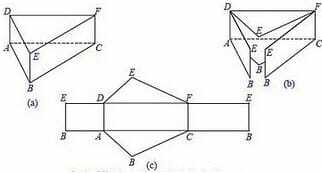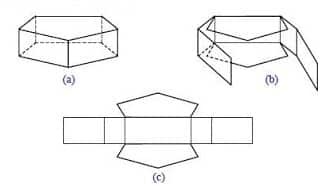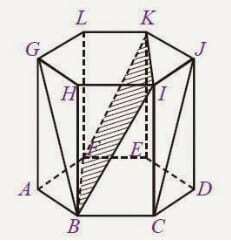Triangle, Triangle, and Hexagon Prism Nets
Formula.co.id – After previously we discussed about Cube nets this time we will discuss material about prism nets and their sizes both right-angled and triangles and pentagons, we will describe in detail and complete the definition, types, elements of prisms, and how to make prism nets using cardboard.
Table of contents :
Definition
Prism is a shape that has a pair of parallel planes with the same size and shape as the base and the lid, while the vertical planes are obtained by connecting the vertices of the two planes that are parallel.
The nets are the division of a related figure so that when combined it will become a certain spatial shape.
So it can be concluded that prism nets are intertwined shapes or nets that form a prism, be it triangular, pentagon, and hexagon prisms.
Prism Types
Triangular Prism
triangular prism is a prism that has a triangular base, regardless of the type of triangle; can be isosceles triangle, equilateral triangle, right triangle or any triangle.
According to the Big Indonesian Dictionary, a triangular prism is a closed shape by a combination of two triangular areas and three rectangular areas.

Properties of a Triangular Prism
- A triangular prism has 5 sides, 3 of which are rectangular in shape.
- And the 2 sides that are located on the base and roof are triangular.
- A triangular prism has 6 vertices.
- Has 9 ribs, and 3 of them are upright ribs.
pentagonal prism
Just like in triangular prism nets, pentagonal prism nets are obtained by slice some of the prism's ribs so that we can lay down the prism space on the plane flat. The following is an example of the flow of making a net on a pentagonal prism.

Properties of a pentagonal prism
- It has 10 corner points.
- Has 15 ribs, 5 of which are upright ribs.
- It has 7 sides, 5 sides are on the sides in the form of a rectangle.
- And the other 2 sides that are on the base and the roof are pentagon-shaped.
Hexagon Prism
A hexagon prism is a 3-dimensional shape that has a base and a hexagon-shaped roof, and also has a rectangular blanket on the side.

Hexagon prism properties
- Has 18 ribs, and 6 of them are upright ribs.
- Has 12 corner points.
- It has 8 sides, 6 sides are on the side and has a rectangular shape.
- And the other 2 sides are on the base and also the hexagon-shaped roof.
Elements of a Prism
The following are the elements of a hexagon prism;

Side or Field
A hexagon prism has 8 sides or planes. Look at the picture above which is the side or plane of a hexagon prism, namely:
- The side of the base is ABCDEF
- The upside is GHIJK
- Front side is BCIH
- The back side is FEKL
- Front Right Side is ABHG
- Right Back Side is AFLG
- Front Left Side is CDJI
- Left Back Side is DEKJ
Lateral
A hexagon prism has 18 edges, 6 of which are upright. Look at the picture above, which is the rib, namely AB, BC, CD, DE, EF, FA, GH, HI, IJ, JK, KL, LG, the upright ribs are AG, BH, CI, DJ, EK, FL.
Corner Point
A hexagon prism has 12 vertices, namely A, B, C, D, E, F, G, H, I, J, K, and L.
Field Diagonal
A hexagon prism has 16 diagonal planes or side diagonals, pay attention to the picture above which is the diagonal of the plane between them; BG, CJ, BI, AH, HC, ID, DK, JE, KF, LE, LA, GF, HK, IL, BE, and CF.
Diagonal plane
Look at the picture above which is a diagonal field including BFKI, ECHL, KLBC, HIEF and so on.
Space Diagonal
Look at the picture of the hexagon prism above, there are 36 diagonal spaces, which are the diagonals of space, including AI, AJ, AK, BJ, BK, BL and so on.
How to Make Prism Nets Using Cardboard or Cardboard
- First provide tools such as; pencil, ruler and scissors.
- Draw prism nets according to the picture above on cardboard or cardboard.
- After the image is finished, now cut out the image of the nets.
- After finishing cutting, now each striped part is bent according to the pattern.
- After bending, we just need to connect each bend it will form a prism.
- Then the finished prism nets are as above.
This was a complete discussion of the material about prism nets, hopefully it will be useful...
READ ALSO:
- Tube Nets
- Nets of Cones
